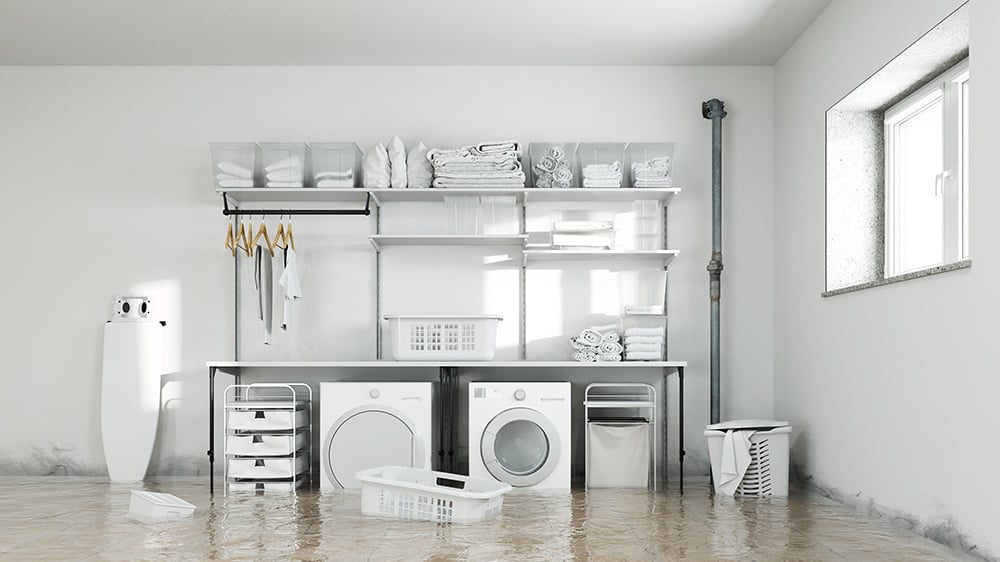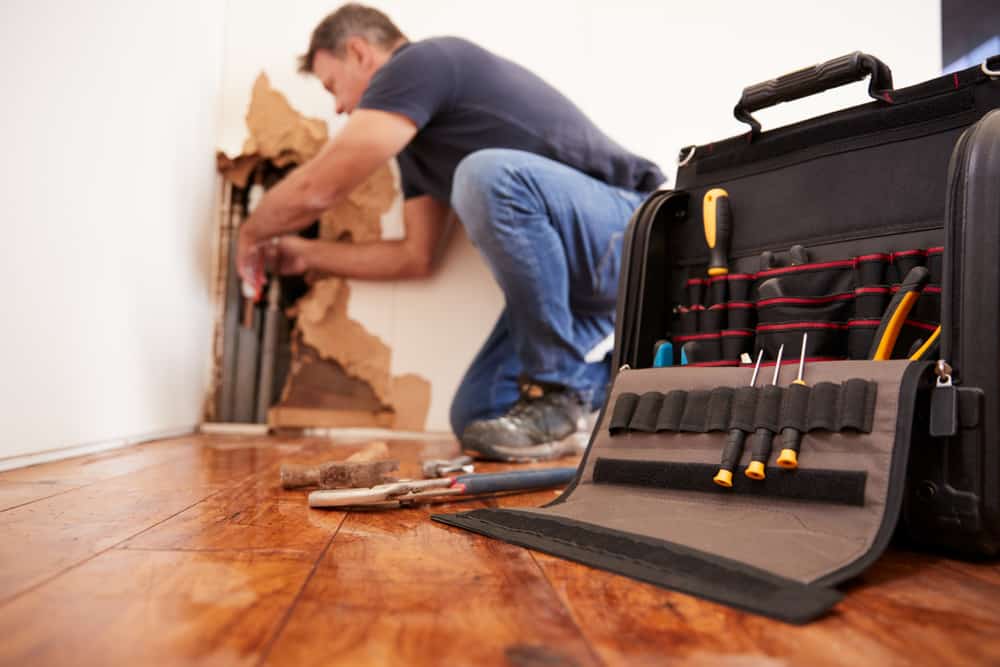Owning a home is a dream come true, offering a haven of security and stability for you and your loved ones. But if you live in a flood-prone area, that sense of security can be overshadowed by the constant worry of water damage.
Floods are nature’s wrecking balls, leaving a trail of devastation in their wake. With climate change intensifying weather patterns, floods are becoming more frequent. This makes it crucial for homeowners in flood zones to take proactive steps to safeguard their property.
When disaster strikes, having a dependable and experienced partner by your side is a game-changer. That’s where 1-800 WATER DAMAGE of Southwestern Indiana steps in. As a leading name in residential restoration, 1-800 WATER DAMAGE specializes in helping homeowners recover from the damaging effects of floods.
Throughout this article, we’ll explore essential tips and proactive measures you can take to protect your home from floodwaters. By preparing your property beforehand, you can minimize the damage and get back to normal life faster.
Assessing Your Home’s Vulnerability to Flood Damage
Assessing your property’s vulnerability to floods is the first crucial step toward developing a comprehensive flood preparedness plan.
Identifying Flood Risk Factors Specific to Your Area
- Research Local Flood History: Understanding your specific flood risk starts with a deep dive into your area’s history. Look for records of past floods, floodplain maps, and any insights offered by local authorities or the Federal Emergency Management Agency (FEMA).
- Consult Flood Hazard Maps:Next, consult flood hazard maps. Often created by FEMA and other organizations, these maps pinpoint areas with varying flood probabilities. Check if your home sits within a designated flood zone, and use that information to assess your property’s individual flood risk level.
- Consider Elevation:How high does your property sit compared to nearby water sources like rivers, lakes, or the coast? Lower elevations are more vulnerable to flooding. Understanding your property’s elevation can help you predict the potential severity of floodwaters during different events.
Evaluating Your Home’s Location and Surroundings
- Proximity to Water Sources:Take a good look at how close your home is to any bodies of water – rivers, streams, ponds, you name it. The closer you are, the higher the chance of flooding during heavy rains or rising water levels.
- Drainage Patterns: Next, investigate the drainage patterns in your neighborhood and on your property itself. Poor drainage can cause water to gather around your home during heavy rains, making it more likely to seep in and cause flooding.
Using Flood Maps and Local Resources to Determine Flood Probability
- FEMA Flood Insurance Rate Map (FIRM): Unlock a wealth of information by checking your area’s FEMA Flood Insurance Rate Map (FIRM). This map will reveal your property’s flood zone designation and Base Flood Elevation (BFE). The BFE signifies the water level expected during a major flood event, giving you a sense of how deep floodwaters might get.
- Online Tools and Apps: Various online tools and apps can assess your flood risk based on your address or zip code. These resources can provide additional insights into your property’s flood vulnerability and empower you to make informed decisions.
- Local Authorities and Floodplain Managers:Don’t hesitate to reach out to local floodplain managers or authorities. They’re a treasure trove of information on flood risks specific to your region. They can also offer guidance on flood preparedness and any local initiatives in place to mitigate flood risks.
Essential Precautions for Homeowners in Flood-Prone Areas to Avoid Water Damage
After assessing your home’s vulnerability to flooding, if you discover that you live in a flood-prone region, it’s crucial to take proactive steps to fortify your home against potential flood damage. By taking essential precautions, you can reduce the impact of floods and protect your property.
Elevating Vulnerable Electrical Systems and Utilities
- Electrical Panel Elevation: Elevate your electrical panel above the potential flood level, preferably on an upper floor or a secure platform. This keeps water away from electrical components and reduces the risk of dangerous electrical hazards during a flood.
- HVAC Equipment Elevation:Raise your HVAC equipment, including furnaces and air conditioning units, to higher ground. Floodwaters can damage these systems beyond repair, leading to costly replacements. By elevating them, you can avoid a financial blow.
- Appliances on Raised Platforms: Secure appliances like water heaters, washing machines, and dryers on raised platforms to keep them above potential floodwaters. This double-duty defense strategy helps prevent both electrical and mechanical damage.
Installing Sump Pumps and Backflow Valves
- Sump Pump Installation: Consider installing a sump pump in your basement or crawl space. These workhorses pump out water from the lowest areas of your home during floods, minimizing water damage and preventing mold growth.
- Backflow Valve Installation: Have a backflow valve installed in your sewer line. This acts as a one-way street, preventing sewage from backing up into your home during heavy floods. This can stop contamination and serious damage to your property’s interior.
- Regular Maintenance:Remember, an ounce of prevention is worth a pound of cure! Regularly maintain your sump pump and backflow valves. Test them frequently and ensure they’re in top shape – you’ll be glad you did when the floodwaters threaten.
Insurance Coverage and Documentation
- Secure Flood Insurance: Standard homeowners’ insurance doesn’t cover flood damage. Invest in separate flood insurance to safeguard your home and belongings from flood-related losses.
- Document Your Belongings:Create a detailed inventory of your possessions, including photos or videos of valuable items. Store this information digitally or in a safe deposit box. Having this readily available will make filing insurance claims a breeze if a flood ever strikes.
- Review Your Policy:Don’t just buy flood insurance, understand it! Take time to review your policy’s coverage and limitations. Make sure it provides the protection you and your possessions deserve.
Seeking Professional Restoration Assistance for Damage Due to Floods
If a flood ever hits your home, remember – time is of the essence! Taking quick action minimizes damage and prevents further issues.
One of the biggest benefits of calling in professional restoration services? They stop secondary damage caused by a botched cleanup. Their expertise ensures a thorough inspection, drying, and treatment of even hidden areas like wall cavities and crawl spaces, preventing lingering problems that could plague you down the line.
This is where professional property restoration service companies, such as 1-800 WATER DAMAGE, play a vital role. Our expert teams are equipped with specialized equipment and knowledge to assess the extent of the damage, implement effective restoration processes, and bring your home back to its pre-flood condition.
This is where professional property restoration companies like 1-800 WATER DAMAGE of Southwestern Indiana come in. Our crack teams are armed with specialized equipment and knowledge to assess the damage, launch effective restoration processes, and get your home back to its pre-flood glory. We’ll be by your side every step of the way, helping you navigate this stressful time and get your life back on track.
Are you in need of damage restoration services? We’d be happy to help! Contact us today or give us a call at 812-625-3475, and we will be sure to assist you and help restore your property to its former condition.



